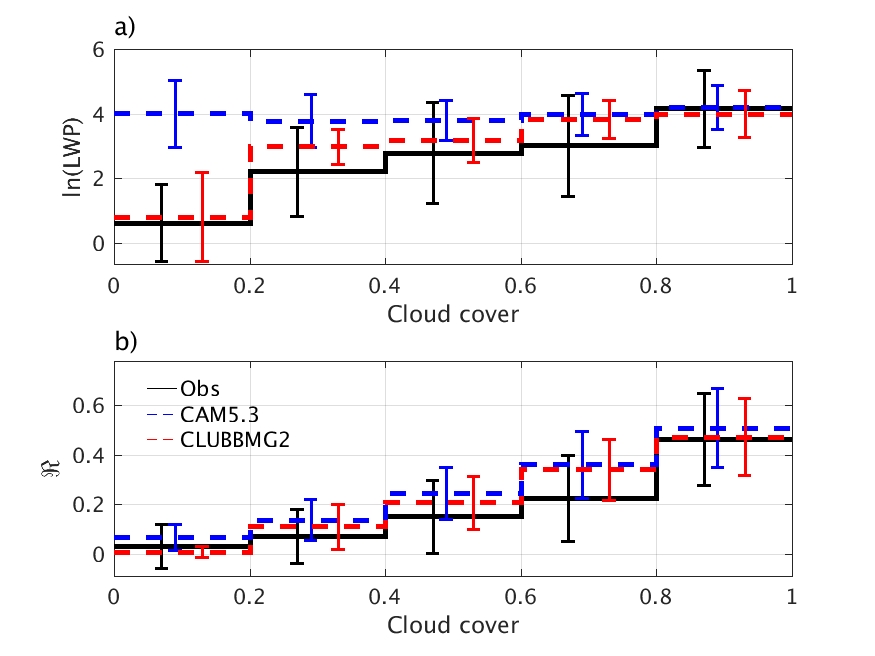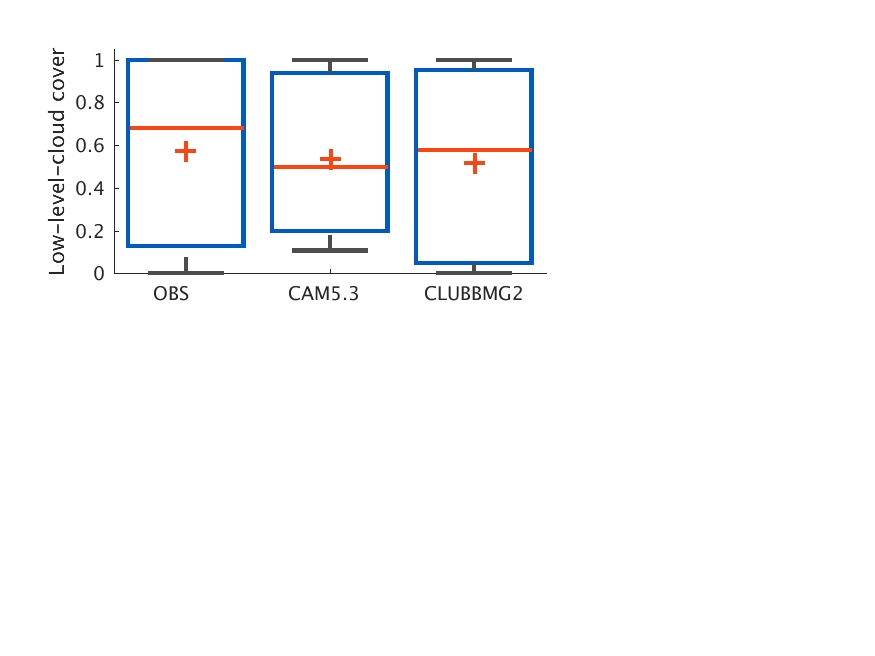ARM Azores Observations Help Identify Deficiencies in Climate Model Simulations of Low Clouds
Submitter:
Zheng, Xue — Lawrence Livermore National Laboratory
Area of research:
Cloud Processes
Journal Reference:
Science
The correctness of low-cloud representation in climate models is crucial to climate change projections and needs to be comprehensively evaluated.
Impact
ARM observations combined with the Cloud-Associated Parameterizations Testbed (CAPT) approach have been shown in this study to be a unique resource for identifying deficiencies in climate model parameterizations.
Summary
The next generation of the Community Atmosphere Model (CAM) adopts a higher-order turbulence closure and cloud scheme called Cloud Layers Unified By Binormals (CLUBB) and an updated cloud microphysics scheme with prognostic precipitation formulation (MG2) to unify the treatment of cloud processes. As a widely used community climate model, its performance for simulating low clouds is of interest to the community and needs to be comprehensively assessed.
This study use ARM Azores observations to evaluate CAPT simulations of low clouds with different sets of CAM parameterization schemes. Results shows that CAM with CLUBB and MG2 better simulates low-level-cloud height, the daily cloud-cover variability, the relationship of cloud fraction to cloud liquid water, and sub-cloud evaporation of precipitation. Furthermore, the ARM cloud observations combined with ARM surface radiation measurement help reveal what part of the cloud biases results in the surface radiative cloud effect biases in climate models. Specifically for CAM with CLUBB and MG2, it does not improve the simulation of surface shortwave cloud radiative effect due to its low-level-cloud bias.



